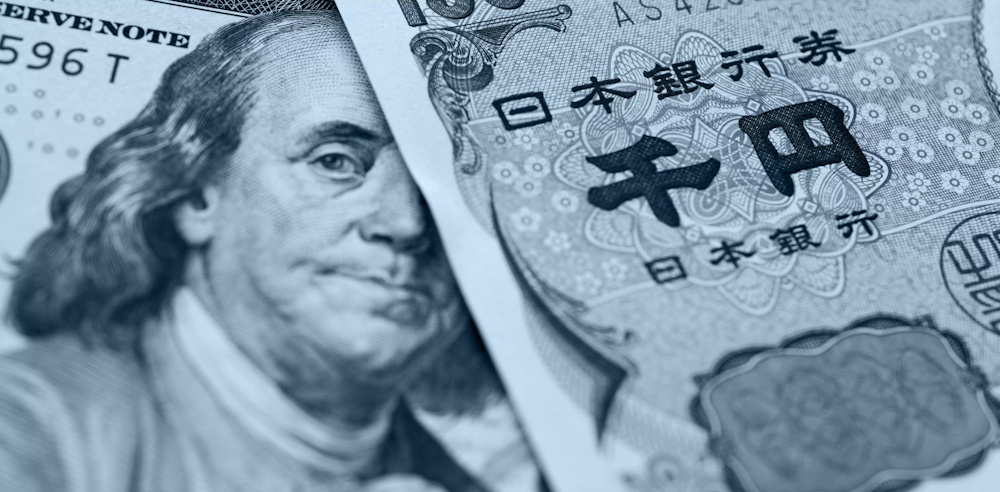The USD/JPY pair is currently positioned around 150.65, bouncing back from the previous week’s low of 149.38. This movement is influenced by changing U.S. rate expectations, Japan’s imminent political transition, and a resurgence of optimism regarding U.S.-China relations, all converging to define a pivotal moment for the yen in 2025. The recovery comes after a week characterized by significant volatility, driven by increasing global uncertainty, a partial U.S. government shutdown, and a notable shift in trade rhetoric from Donald Trump, which helped stabilize risk sentiment and enhance demand for the dollar. The U.S. dollar has strengthened as markets have factored in approximately 50 basis points of total rate cuts by the Federal Reserve by December, based on data. Even with the dollar index falling to 98.00, the greenback saw a slight recovery on Friday, increasing by 0.26%. This movement comes as traders redirect their attention to the forthcoming U.S. Consumer Price Index report, now set for October 24 due to delays stemming from the government shutdown. Forecasts indicate a core CPI increase of 0.3% month-over-month, while headline inflation is projected to rise by 0.4%, reflecting the Fed’s careful stance as we approach the October 29 FOMC meeting. Fed Fund Futures indicate that markets are fully anticipating two quarter-point cuts; however, multiple policymakers, such as St. Louis Fed President Alberto Musalem, have cautioned that the available policy space is constrained before easing could become excessively accommodative. The market’s response to the CPI data will be significant: a weaker reading may stabilize USD/JPY above 150.00, whereas an unexpected increase could lead to a resurgence of hawkish adjustments.
Japan’s attention is firmly directed towards the parliamentary vote on October 21, a pivotal event that may lead to Sanae Takaichi becoming the nation’s first female prime minister. Her policy stance — regarded as more dovish and favorable to the market compared to Shigeru Ishiba — has played a role in the yen’s decline, as investors anticipate ongoing fiscal stimulus and a lack of strong measures against yen depreciation. In the interim, Bank of Japan Governor Kazuo Ueda emphasizes the importance of patience, highlighting the necessity for additional data prior to any potential policy adjustment. The BoJ is expected to maintain its current interest rates during the meeting on October 30, despite core inflation rising to 2.9% year-over-year, an increase from 2.7% in August. The disparity in monetary policy between Japan’s near-zero yields and U.S. rates exceeding 5% continues to be a significant factor influencing USD/JPY strength, keeping the pair consistently above the 150.00 level, notwithstanding periodic retracements. Risk sentiment showed a significant improvement following Trump’s remarks that 100% tariffs on Chinese imports are “not sustainable,” alongside the confirmation of a scheduled meeting with Xi Jinping at the forthcoming APEC Summit in South Korea. The shift from stringent trade rhetoric has positively impacted U.S. equities and risk assets, reversing the safe-haven flows that had momentarily benefited the yen earlier in the week. The outcome was a notable increase in demand for the dollar, driving USD/JPY from its Asian session low of 149.38 towards 150.50, with momentum continuing into European hours.
The reduction in trade tensions has led to a decrease in implied volatility within the forex market, resulting in lower costs for USD/JPY options. Market participants are progressively adopting straddle strategies centered on the 150.50 strike, anticipating a surge in volatility influenced by the Fed’s decision in October and the upcoming APEC meeting in November. Given the interplay of geopolitical developments and monetary expectations, current short-term positioning suggests a preference for tactical dollar strength, although the risks of intervention remain a concern. The USD/JPY exhibits a robust inverse correlation of 0.73 with Fed Funds futures pricing extending to 2026, underscoring the preeminence of interest rate differentials compared to other influencing factors. The yen’s recovery observed last week was primarily associated with a decline in U.S. Treasury yields. Additionally, both realized and anticipated volatility in U.S. stock markets significantly influenced this movement, showing correlations of -0.85 and -0.87, respectively, with dollar-yen fluctuations. This dynamic indicates that a potential increase in equity volatility may lead to a reemergence of yen strength through the unwinding of carry trades. On the technical front, USD/JPY has regained its position above 150.00, yet it encounters several layers of resistance. The initial resistance level is positioned at 151.00, with the subsequent level at 152.40, which acted as a pivotal zone earlier this month. A breakout above 153.28 would signify a clear extension toward 154.80, whereas downside supports are positioned at 149.41, 149.00, and the 200-day moving average around 148.60.
The RSI has stabilized near neutral levels, and the MACD is approaching a bearish crossover, suggesting short-term exhaustion even as medium-term bullish momentum remains intact. The price action in the range of 150.50–151.00 is critical — a close above this level would reinstate bullish sentiment, whereas increased volatility may lead to a resurgence in yen buying as a defensive measure. The ongoing U.S. government shutdown, which has now extended into its third week, has resulted in the postponement of significant economic reports. Consequently, markets are increasingly dependent on private data and prevailing expectations. Over two million federal employees are currently without pay, heightening concerns regarding immediate consumer expenditure. The postponement of CPI data has heightened the pressure, as specific Labor Department personnel have been summoned exclusively to compute the inflation metrics necessary for the Social Security cost-of-living adjustment. In the global context, the yen’s weakness aligns with a general sense of dollar fatigue against European counterparts — EUR/USD is trading near 1.1655, while GBP/USD is around 1.3427, with both pairs showing weekly gains. The dollar’s safe-haven behavior has diminished; it now functions more like a cyclical currency, appreciating with enhanced sentiment and depreciating during periods of stress. This transition has maintained the resilience of USD/JPY compared to other pairs, as it navigates the intersection of policy divergence and the global risk sentiment.

